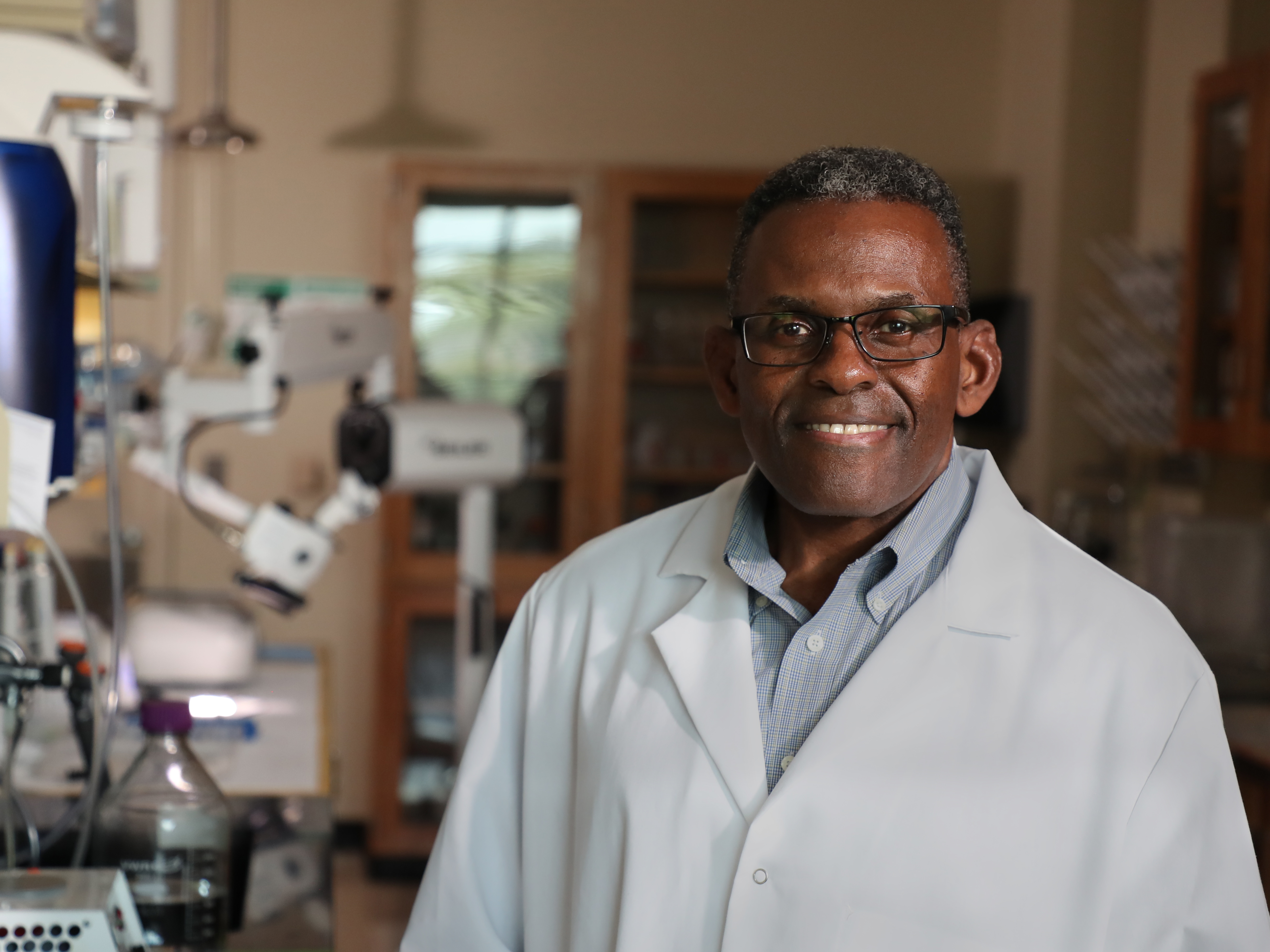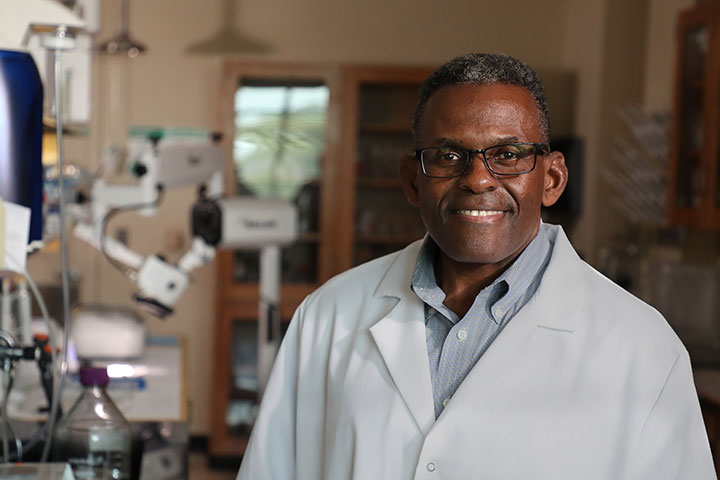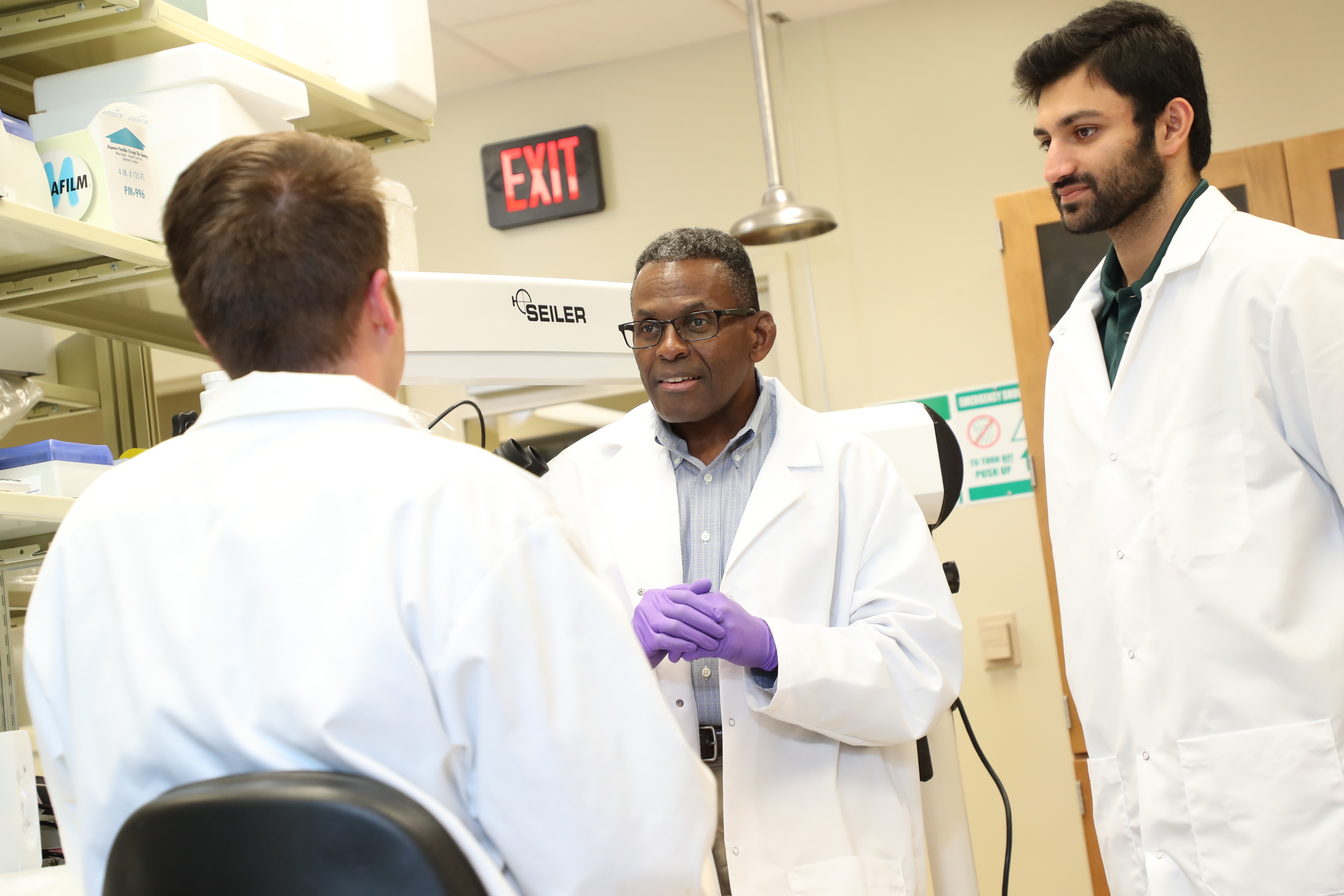From the Classroom to the Lab and Beyond: Baylor Biology Chair Seeks to Drive Research Among Students and Faculty


Contact: Whitney Richter, Director of Marketing and Communications, Office of the Vice Provost for Research, 254-710-7539
Written by: Blake Thomas, Office of the Vice Provost for Research
WACO, Texas (May 9, 2019) – Dr. Dwayne Simmons, chair of Baylor’s Department of Biology and the Cornelia Marschall Smith Endowed Professor, loves to study the way organisms react to changes in their environment. One of his earliest research experiences was studying plants’ response to different levels of light for his high school science fair. He went on to build a career studying the human brain and the molecular basis of age-related hearing loss. Along the way, he has profoundly impacted the lives of his students through mentorship in the lab and his leadership of programs devoted to increasing research opportunities for students at R1 institutions such as Washington University in St. Louis and UCLA.
Simmons has seen first-hand the benefits of participating in research as an undergraduate. During his first year as a student at Pepperdine University, he had the opportunity to perform research on sand dollars at Point Mugu, a California state park and nature preserve. His first project was focused on ecology, but with the support of his faculty mentors, he transitioned his research into a lab bench project using microscopy to learn how different types of sediment affected the sand dollars’ ability to undergo morphological transitions.
“I just loved doing research,” Simmons recalls. “[My mentors] allowed me to take projects in the direction that I wanted to take them, so I was fully functioning as a scientist, not just a lab helper.”
After earning his Ph.D. at Harvard, Simmons had the opportunity to return to Pepperdine as a faculty member. At Pepperdine he helped to formalize an undergraduate research program for students interested in pursuing careers in biological research. Simmons was the principal investigator on the first proposal to the National Science Foundation requesting funding for the Research Experiences for Undergraduates (REU) program, which is currently in its 28th consecutive year of operation.
As chair of Baylor’s biology department, Simmons considers his most important priorities to be increasing faculty research output and providing high-quality educational experiences to students—two aims that some academics believe operate at cross purposes. If faculty spend too much time with students, the thinking goes, they won’t be able to fully devote themselves to research, while research-active faculty won’t be able to devote the necessary attention to undergraduate teaching.

But Simmons does not see research and teaching as contradictory. Indeed, he believes strongly that with the right planning, the two can not only coexist, but in fact can enhance one another. He says that the best way to teach undergraduates about any scientific discipline is to engage them in hands-on research.
“For me, if you’re going to understand your discipline, you have to have hands-on experience with that discipline,” he explains. “In biology and in the sciences in general, the most fundamental activity is exploring and creating knowledge. So if you’re going to teach undergraduates well, they have to have that experience. They’ll understand the complexity of biology as well as the underpinnings of that complexity—the chemistry, the physics, the mathematics that are involved.”
One part of Simmons’ plan involves revising the undergraduate biology curriculum to involve students in independent research starting in their very first semester on campus. The goal, Simmons says, is for all Baylor biology majors to experience research in course-based lab settings where they are asked to tackle open-ended research questions and come up with new answers. By designing the undergraduate curriculum around research questions that are related to ongoing faculty projects, students not only have valuable learning experiences themselves but also contribute to advancing faculty research agendas.
Eric Nealy, one of Simmons’ former students at UCLA, is a great example of the potential of laboratory research experiences to help shape a student’s career choices. Nealy took an undergraduate life science class under Simmons and then asked about the possibility of working in Simmons’ lab. Nealy says his grades up to that point had been lower than many of his peers and he had already been turned down for opportunities in other labs, but Simmons saw his potential and invited him to join his team.
“It taught me to feel comfortable in a lab setting and to not get discouraged if the data doesn’t necessarily show what I thought it would,” Nealy says. “[Simmons] was the first person to give me a shot to be an undergraduate in their lab and that was really important for me.”
Before joining Simmons’ lab, Nealy says he was questioning his own ability to succeed in graduate school, but the experience of working with Simmons reawakened his passion for science. By graduation, he was on the dean’s list and now, four years later, he is in a Ph.D. program at the University of Washington studying pediatric brain cancer and recently received the prestigious HHMI Gilliam Fellowship for Advanced Studies.
Nealy credits Simmons’ mentorship for showing him what it means to be a real-world scientist and for laying the foundation for his career in research. “Just having someone give me that shot when I was feeling quite possibly at my worst—that was a trajectory-changer.”
At Baylor, Simmons’ passion for undergraduate research is already bearing fruit. He has teamed with the chairs of other science departments to create the Baylor Transdisciplinary Research Undergraduate Experience (B-TRUE), a ten-week summer program that brings together Baylor students from a variety of different scientific disciplines to perform independent, faculty-mentored research focused on a central theme. In addition to conducting research in their own disciplines, the students meet regularly as a group to discuss their projects and to hear how the various disciplines bring different perspectives to the research questions stimulated by the summer program’s central theme.
This interdisciplinary approach to undergraduate research mirrors the way Simmons approaches his goal of increasing research at the faculty level. While he concedes that a university of Baylor’s size can’t excel in all research areas, he believes that by bringing together faculty from across different disciplines into interdisciplinary research centers, the science departments can develop critical competencies in key research areas.